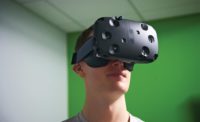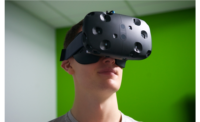How virtual environments can be used to prevent design errors




All year, shoppers yearn to be captivated by holiday spirit – the smell of peppermint and evergreen, sparkly gifts and the sound of Salvation Army bell ringers. Retailers and manufacturers do their best to oblige. Whether it’s redesigning everyday items to boast enchanting packaging or creating surprise and delight through world-famous window displays like those at Macy’s and Bloomingdale’s, retailers and manufacturers run a crash course in design each year to create holiday magic that will attract customers and capitalize on sales.
With modern day technology and access to consumer data, it is increasingly difficult to defend holiday packaging and store displays that result in underwhelming sales. As consumer shopping continues to grow, sales should as well. Retailers and manufacturers are re-thinking their approach to design with the integration of tools like virtual reality (VR) to help them make well-informed decisions in the design process that will mitigate risk and improve their bottom line.
Conceptualization in its current state is a wasteful element to design. It takes hours to collect inspirational holiday stim and whiteboard ideas that will come to life in the form of expensive physical mock-ups, all of which eventually end up in the garbage. However, using VR, companies can bypass this expensive and time consuming step by quickly importing art files and sharing them across teams in a collaborative hyper-realistic retail environment. Within this environment, companies can iterate concepts on the fly while also visualizing them in the context of actual retail environments. For example you can make sure your new concepts stand out from the blue of Walmart or the red of Target.
Similar to conceptualization, evaluation traditionally wastes time and money. The process of setting up display concepts and recruiting individuals to participate in surveys and focus groups is outrageously time-consuming and expensive. With VR, companies can slim down resources by conducting side-by-side, in-depth depth analyses of several concepts in multiple stores to obtain real shopper data that will accurately predict customer behavior. Just think of the benefits for a company like Starbuck’s that could better predict the reaction to its holiday cups.
And because of the ability to test in VR, there’s no need to conduct confusing and disruptive in-store tests or holiday themed focus groups in June or July only to be left agonizing over whether the design will still be relevant come November or December. VR means the ability to start the planning process early and have ample time to make adjustments to messaging and artwork.
VR also enhances the communication and collaborative functions of the design process. With executives and partners often geographically scattered, companies rely heavily on email and phone to make design refinements. A minuscule mistake could mean a difference in a color that’s “Santa’s Sleigh Red” instead of “Christmas Tree Bark Brown.” Once winning designs are chosen, executives are often flown around the country or the world to see mock-ups and conduct in-person testing. With VR, collaboration becomes seamless, notes can be placed, seen and edited by everyone. And, with the introduction of hyper-realistic visuals as opposed to flat, boring images, executives can stay put with the confidence that the image is “virtually” the same as a physical mockup.
The process of integrating technologies like VR into design will become the new normal over the next 3-5 years. As consumer spending increases, companies will be challenged to create new holiday packaging and displays year after year that continues to attract consumers and move product. Smart companies are not only looking at innovative designs but also looking at how to cut costs and time associated with the design process - where VR can make a real impact.
Looking for a reprint of this article?
From high-res PDFs to custom plaques, order your copy today!







